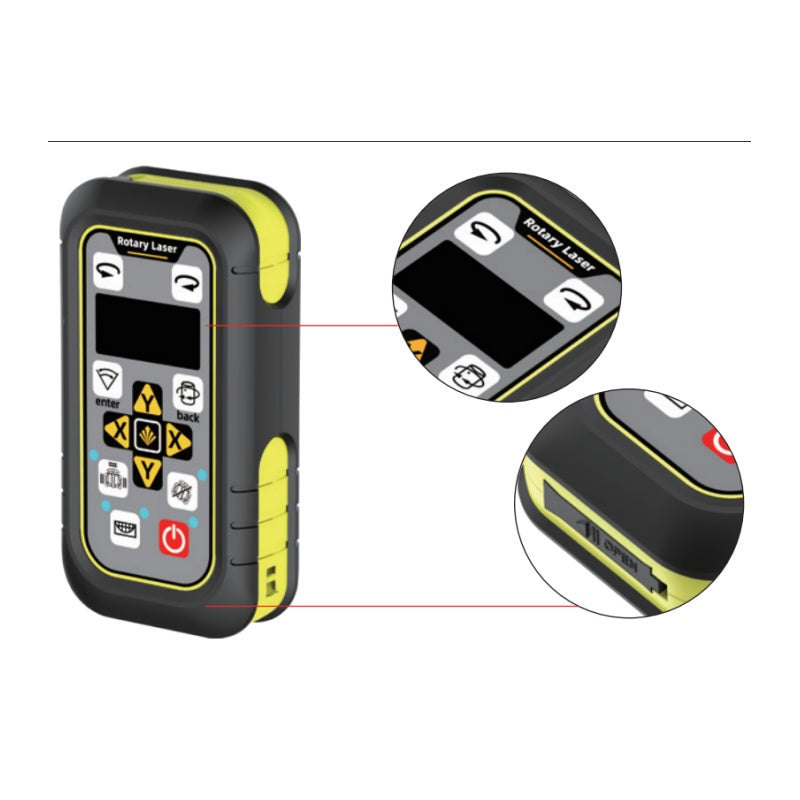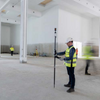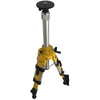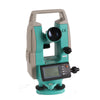How to Use Rotary Laser Remote Control to Improve Work Efficiency?

1. Remote Operation for Faster Adjustments
A Rotary Laser Remote Control eliminates the need for constant manual adjustments. Instead of walking back and forth to the laser level, users can:
Adjust beam direction and slope remotely.
Switch between horizontal and vertical leveling modes.
Fine-tune measurements without interrupting workflow.
This feature is especially useful in large construction sites where frequent adjustments are required.

2. Increased Accuracy with Digital Controls
Manual adjustments can lead to human error, but a Rotary Laser Remote Control ensures precision by:
Providing digital readouts for exact measurements.
Enabling micro-adjustments for fine alignment.
Reducing setup time by avoiding trial-and-error leveling.
3. Enhanced Safety in Hazardous Environments
In dangerous work zones (e.g., trenches, high scaffolding), the remote control allows:
Operation from a safe distance.
Avoiding unnecessary exposure to moving machinery or unstable surfaces.
Reducing accidents caused by manual handling.
4. Multi-Person Collaboration
With a Rotary Laser Remote Control, teams can work more efficiently by:
Allowing one operator to control the laser while others focus on marking or construction.
Supporting multiple remotes (in some models) for synchronized work.
5. Time Savings on Repetitive Tasks
Tasks like grading, foundation laying, and pipe installation require repeated laser adjustments. A remote control:
Cuts setup time by up to 50%.
Reduces fatigue from constant manual repositioning.

Key Applications of Rotary Laser Remote Control
The Rotary Laser Remote Control is widely used in:
Construction & Building
Aligning foundations, walls, and steel structures.
Ensuring level floors and ceilings.
Surveying & Land Measurement
Setting elevation benchmarks.
Grading land for drainage and roads.
Interior Finishing & Renovation
Installing drop ceilings, cabinetry, and tiles.
Aligning electrical and plumbing systems.
Agriculture & Landscaping
Leveling fields for irrigation.
Setting slopes for landscaping projects.
What to Consider When Buying a Rotary Laser Remote Control?
1. Compatibility
Ensure it works with your rotary laser model.
2. Range & Signal Strength
Look for a minimum 100m range for large job sites.
Check for interference resistance (e.g., 2.4GHz RF signals).
3. Durability & Weather Resistance
IP54 or higher rating for dust/water resistance.
Shockproof casing for rugged environments.
4. Functionality
Slope adjustment capability.
LCD display for real-time feedback.
Multi-speed control for precision.
5. Battery Life
Long-lasting rechargeable batteries (or replaceable options).

Conclusion
The Rotary Laser Remote Control is a game-changer for professionals who demand speed, precision, and safety in their work. By enabling remote operation, reducing errors, and improving efficiency, it is a must-have tool for construction, surveying, and engineering projects.
When choosing a Rotary Laser Remote Control, prioritize compatibility, range, durability, and functionality to maximize productivity.
Ready to boost your workflow? Contact Mountlaser, a leading manufacturer of high-quality Rotary Laser Remote Controls, and get the best tools for your projects today!





